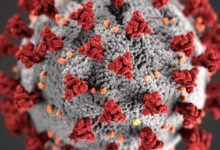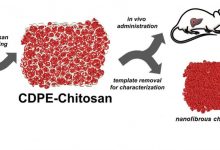
According to the current statistics, about 12% of women have a lifetime risk of developing breast cancer. In recent years, there’s been an eruption amongst the oncologists and associated scientific community, on discovering life-saving treatment advances against breast cancer. The measures till now discovered for its cure are — surgery, radiation, hormonal (anti-estrogen) therapy, and/or chemotherapy.
Scientists from Stevens Institute of Technology have developed a novel molecule which utilizes an unknown mechanism to target breast cancer cells, especially for the patients with drug-resistant or severe metastatic stages of the disease.
Abhishek Sharma, a chemistry professor at Stevens, classified this new molecule to the class of drugs that degrade estrogen receptors, proteins inside cells that have been proven to be the most significant target in breast cancer medication over the last 30 years.
“The unique benefit of our compounds is that this is a fundamentally different type of structure that was previously not known to degrade or inhibit estrogen receptors,” said Sharma, whose work was recently published in the journal ACS Medicinal Chemistry Letters. “It’s not a tweak of an existing drug; it works in a completely different way.”
Due to the increasing demand and various clinical applications of such drugs called Selective Estrogen Receptor Degraders (SERDs), various pharmaceutical companies have endowed much of their time in developing them and to remodel their structure.
In the majority of cases, breast cancer tumors gain resistance towards these drugs, as a consequence of which patients are given high dose chemotherapies to prevent cancer from escalating. The setback of SERDs is that they are difficult to formulate into pills, because of which patients are given large painful injections directly into their muscles. More recently, drugs have failed in clinical trials because of side effects.
In addition to Abhishek’s team, many cancer biologists and physicians at Memorial Sloan Kettering Cancer Center in New York and at the University of Illinois were looking ahead to investigate a better way to treat breast cancer, which protects one in eight U.S. women and tens of millions of women worldwide.
For their study, they considered a molecule which serves as a “homing device” for estrogen receptors and to that they attached a series of experimental side-chain compounds known as degrons. Once this homing device was attached to the estrogen receptor, it was degraded by the degrons by hijacking tumor cell’s protein-disposal machinery and routing it to the receptor.
For weeks and months, scientists experimented to formulate several combinations with this homing device. They tested more than a dozen of them and observed their interaction with the cancer cells’ estrogen receptors. These new molecules were easily delivered. They not just deteriorated the estrogen receptors but also inhibited various signals that lead to cell progression, and also blocking the hormone estrogen from binding to it.
“We consider these results to be very promising,” said Sharma. “This is a novel molecular structure, and several analogs produced excellent early activity.”
Further next, Stevens team will further look forward to identify potential and promising compounds that develops them into more potent drug to be investigated in mouse models.






